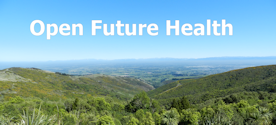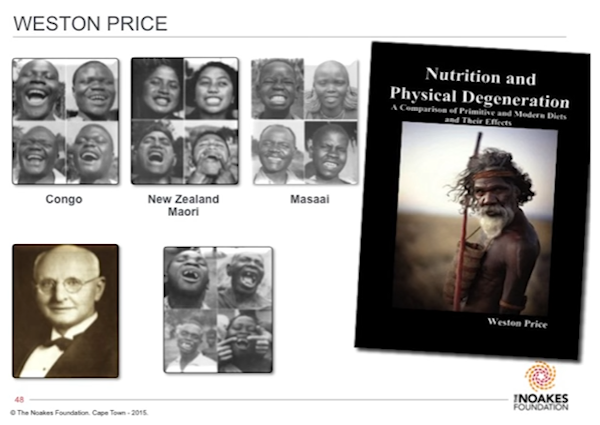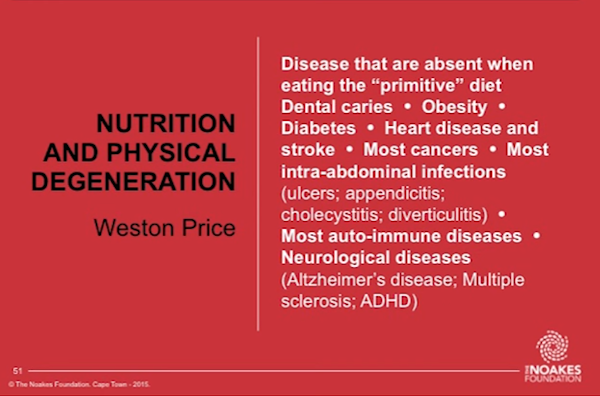Insulin, Insulin Resistance and Ketones
We only have 2-4gm of glucose in our blood system and we can easily eat 100g of glucose equivalent at a single meal. Insulin is the hormone that allows your body to respond to the excess glucose in the blood.
600 years ago, most people ate once a day. There were many hours when insulin levels in the body were low. Today, we eat every three hours, perhaps more often, and the body is almost never in a low insulin state. Every time we eat we damage our liver and our arteries.
Prof. Noakes says "My father suffered from ![]() Type 2 Diabetes. A few years ago, despite my marathon running, I began to put on weight. Tests showed that I was also Type 2 Diabetic. Was I on the same journey as my father? That didn't end well."
Type 2 Diabetes. A few years ago, despite my marathon running, I began to put on weight. Tests showed that I was also Type 2 Diabetic. Was I on the same journey as my father? That didn't end well."
"The treatment of my father then, and sadly continuing as a recommended treatment today, was to medicate the excess glucose concentration. This is entirely the wrong treatment, making type 2 diabetes a progressive and usually fatal disease." "It is my responsibility, as someone with type 2 diabetes, and with my understanding of the human body, to get the message out to the world. Type 2 diabetes is not progressive, and with attention to your diet you can live an entirely symptom free life."
 |
| Click to enlarge |
|---|
On Losing Weight
"Concerned given my own diagnosis with my increasing weight, I spotted an email from some professional colleagues, Westman. Phinney and Volek, promoting their new book, The New Atkins and the New You. I knew these men as good scientists. But Atkins? Wasn't he the guy who tried to kill us with his diet? I was curious. I read the book. Many scientific papers were listed. I read the research - it's impressive."
"The book talks about ketosis. I studied exercise induced ketosis in myself in the 1970's. The process is highly regulated and safe. ![]() Ketones themselves are hormones. They are produced in a diet with very low carbohydrates and high fat, about 80%. Or by exercise when glucose levels are low.
Ketones themselves are hormones. They are produced in a diet with very low carbohydrates and high fat, about 80%. Or by exercise when glucose levels are low. ![]() Ketonic diets have commonly been used in medicine to control epilepsy. I found their argument convincing. I adopted this diet for myself."
Ketonic diets have commonly been used in medicine to control epilepsy. I found their argument convincing. I adopted this diet for myself."
The two tables that follow illustrate some experimental work we were doing in 1979-1980, using ourselves as experimental subjects. We were interested in how blood glucose levels responded to intensive exercise. At the time this was evidence of the value of carbohydrates as an energy source for athletes.
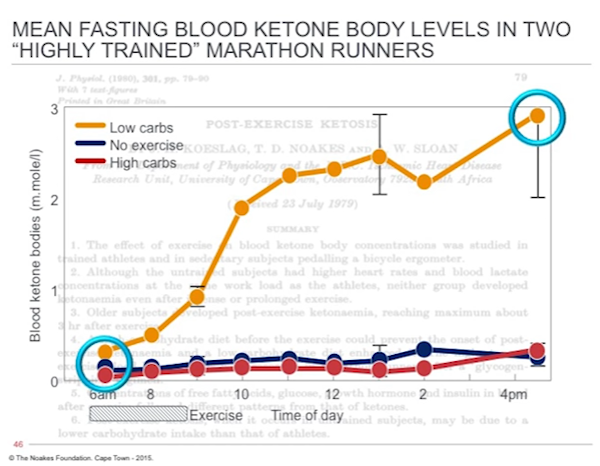 |
| Click to enlarge |
|---|
This table shows the response of the body to exercise. If you eat a high carbohydrate diet for the three days before a two hour run, your body produces hardly any ketones during exercise. But if your diet is very low in carbohydrates for the previous three days, there is a strong response from the liver, producing ketones in response to exercise. (They interpreted this wrongly as meaning that high carbohydrates are essential for athletes.)
This is a highly regulated system. We fasted overnight, we ran for two hours, and we couldn't get our ketone levels to rise above 3 mmol/L (millimolar/L). So long as you produce insulin yourself, this system is always well controlled.
In contrast, diabetic ketoacidosis which occurs in some type 1 diabetics, is entirely different. Because there is zero production of insulin, the body cannot use glucose in the blood, and ketone production begins and runs out of control producing 30-50 mmol, and producing a life threatening situation.
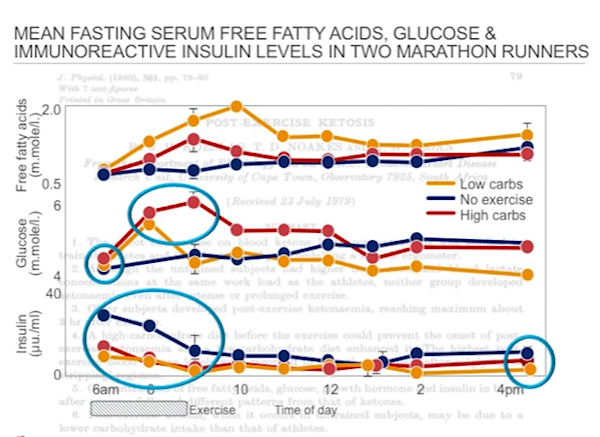 |
| Click to enlarge |
|---|
Here is another chart showing the response of the body to exercise. (The change of diet was only 3 days, so we were not keto-adapted. (That takes 12 - 30 days.)) The two key things here are the glucose response and the insulin response. Even after only three days, BOTH the insulin level and the glucose level were much lower on a low carbohydrate diet. But there is a spike in the blood glucose level after an hour's exercise, very pronounced when eating a high carbohydrate diet.
"I now wonder if that spike is early warning that I was already developing insulin resistance. (30 years before my diagnosis.)"
For medical purposes, therapeutic nutritional ketosis, is used to control severe epilepsy. To reduce the growth of cancer cells, a high level of ketone production in the range of 3-4 mmol is desirable. That's very difficult to achieve, because it involves restriction of both carbohydrate and protein. We would only do that with medical supervision, but it's quite safe, unless you are type 1 diabetic.
Nutritional ketosis is not to be confused with ketoacidosis, a risk for diabetics, when the production of ketones (normally tightly controlled) gets out of control and ketone levels rise to 20 mM or 30 mM plus, a dangerous condition.
"Today my diet contains only 25g of carbohydrate a day. My ketones measure 0.6 mmol (millimolar) today (a few minutes ago), so I'm in mild ketosis. Anyone eating less than 50g of net carbohydrates a day will be using ketones as a significant source of energy, especially for the brain."
Insulin Resistance
Insulin resistance is hard to measure. High resting insulin levels are one indicator. I didn't understand insulin resistance in 1979, when I was taking my own blood tests before and after exercise. I can now see in the data evidence (above) that I was becoming insulin resistant 30 years ago. Perhaps for me insulin resistance has a genetic factor.
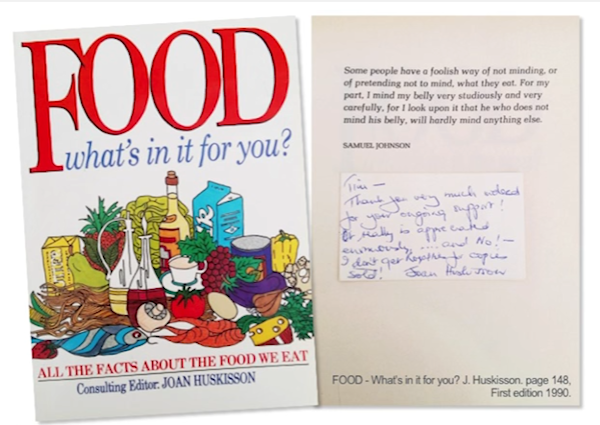 |
| Click to enlarge |
|---|
Because of this experience, I believe that we under-diagnose insulin resistance. We wait until people are diagnosed as pre-diabetic, before recognising insulin resistance. But that may have been a fact for 20 or more years. As it was with me.
Insulin resistance / Hyperinsulinaemia may be the most prevalent medical condition on earth. I had it, despite my youth, and my marathon training. Therefore, I believe it's a very common condition, but we can't be sure.
This book published in 1990, recommends that we eat a high carbohydrate diet. The Author Joan Huskisson, is a friend of mine. What she wrote, was at the time, the very best nutritional science we knew. I don't blame her at all, but we now know that the dietary advice she gives us is wrong.
Recommending a high-carbohydrate diet for everyone, makes carbohydrate intolerance/insulin resistance worse. The dietary guidelines assume everyone can produce insulin in a normal way, that we are all insulin sensitive. In that case glucose in the blood is easily controlled. If people eat a high-carbohydrate diet for 60 years we might expect insulin resistance to increase. That produces a whole cascade of health problems, which are common in our society.
